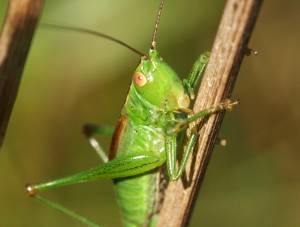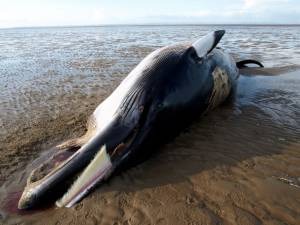Dr Phil Smith’s Wildlife Notes
Septmber 2008
A much needed “Indian Summer” kicked in around the middle of the month helping insects which had otherwise experienced another poor season. Dragonflies suddenly increased, especially the Migrant Hawker (Aeshna mixta), an autumn species that has colonised our region over the last decade. My best count was 20 in the Ainsdale/Birkdale area on 27th. A few Ruddy Darters (Sympetrum sanguineum) lingered on well-vegetated ponds until the 26th and there were more Southern Hawkers (Aeshna cyanea) than usual along the coast. An unexpected sighting was an egg-laying female Common Hawker (Aeshna juncea) at Range Lane, Formby on 25th. Despite its name, this is by far the rarest of our large dragonflies. Most exciting of all was the largest influx of Black Darters (Sympetrum danae) since 2004. From 24th to 28th, I counted a total of 19 individuals at four localities in the sand-dunes, including two pairs. This small peatland dragonfly is known to disperse widely in late summer and may then turn up in unexpected (non-peaty) places.
Butterflies also responded to the sun, with good numbers of Commas, Red Admirals and even some Small Tortoishells, the latter being almost non-existent this year due, it is thought, to the effects of a parasitic fly.
I visited Marshside with friends on 20th, especially to look for the Short-winged Conehead (Conocephalus dorsalis), a bush-cricket that has colonised the Northwest coast since 2002. Much to the delight of our 10-year-old companion, we found dozens of these attractive creatures on the salt-marsh. He could also hear their high-pitched chirps which are beyond the limit of adult ears. The same budding entomologist recorded two new insects, the Water Measurer (Hydrometra stagnorum) and Water Scorpion (Nepa cinerea) in the recently dug ponds on Freshfield Dune Heath Nature Reserve.

A major highlight at the beginning of the month was a Minke Whale washed up dead but in pristine condition on Ravenmeols beach on 30th August. An adult male, it was about 8.5m (27 ft) long and attracted large numbers of sightseers before being removed by the Council. It seems to have been the first record of this species in Sefton since 1954.

September is usually a good month for migrant birds, a keen sea-watcher being rewarded on 3rd by a rare and beautiful Sabine’s Gull and over 900 Manx Shearwaters off Ainsdale beach. Another good find was a Red-necked Phalarope at Martin Mere on 5th. Wrynecks were recorded at both Marshside and Seaforth, while a Yellow-browed Warbler from Siberia graced the latter reserve on 25th. Pink-footed Geese arrived in great numbers as usual, the monthly peak being 16,000 at Marshside on 29th,joining about 2000 Black-tailed Godwits, also mainly from Iceland. High pressure over Scandinavia in mid-month brought lots of Honey Buzzards across the North Sea; several reached the Northwest, though regrettably none came in my direction. The month ended with a northwesterly gale and the first reports of an autumn speciality on our coast – Leach’s Petrel.
